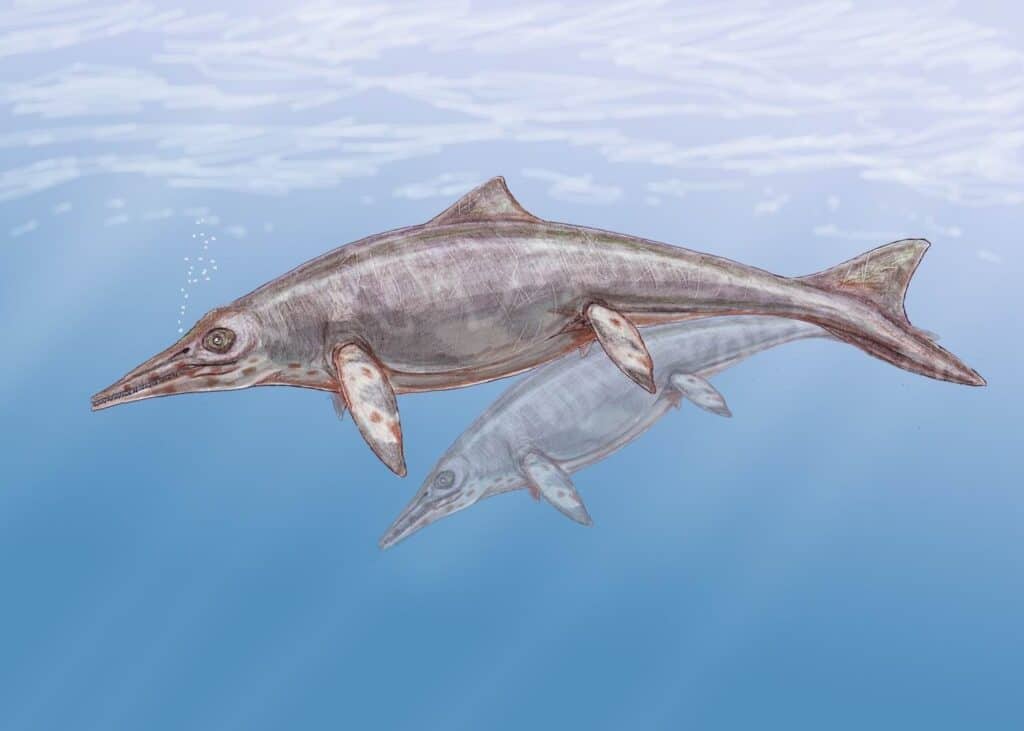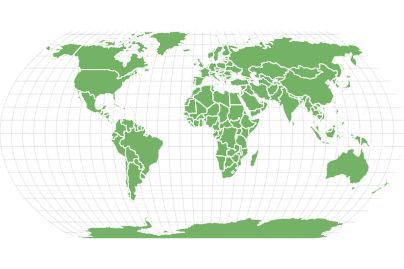Despite the massive size of the Shastasaurus, it only ate soft-bodied prey.
Advertisement
Shastasaurus Scientific Classification
- Kingdom
- Animalia
- Phylum
- Chordata
- Class
- Reptilia
- Order
- Ichthyosauria
- Family
- Shastasauridae
- Genus
- Shastasaurus
- Scientific Name
- Shastasaurus pacificus
Read our Complete Guide to Classification of Animals.
Shastasaurus Conservation Status
Shastasaurus Facts
- Prey
- Cephalpods and other soft-bodied prey
- Main Prey
- Cephalopods
- Fun Fact
- Despite the massive size of the Shastasaurus, it only ate soft-bodied prey.
- Biggest Threat
- Competition from the sharks, Teleostei, and plesiosaurs
- Most Distinctive Feature
- Shastasaurus had a very short snout with no teeth
- Distinctive Feature
- It had big flippers for locomotion but no dorsal fin
View all of the Shastasaurus images!
Shastasaurus is a genus of large fish-like reptiles that lived from the Middle to the Late Triassic Period. It is the largest known marine reptile. Fossils of this massive marine monster have been found in North America and Asia, which suggests that it lived on these continents. Despite being a large and scary-looking reptile, Shastasaurus most likely preferred soft-bodied prey like squids.
Description and Size
Shastasaurus is an extinct genus of marine reptiles that lived during the Triassic. It belongs to a group of fish-like reptiles known as ichthyosaurs, a dominant group of marine reptiles during the Mesozoic Era. The name Shastasaurus means “Mount Shasta lizard.”
Three species of different sizes exist in the genus. The typical species (the first described member of the genus), Shastasaurus pacificus, was medium-sized. It measured about 23 feet long and weighed up to 1.5 tons. However, the real monster in the genus was the Shastasaurus sikanniensis. It was up to 69 feet long and weighed up to 81 tons.
Regarded as the largest reptile to have ever lived, Shastasaurus was about the size of a Blue Whale. However, the classification of this reptile in this genus has been a bit controversial. Some scientists think it is more closely related to the Shonisaurus (another type of ichthyosaur) than the Shastasaurus.
Members of the ichthyosaurs group looked like a cross between a dolphin and a lizard, and the Shastasaurus had this general body profile as well. However, it was slightly more specialized and differed considerably from the other ichthyosaurs’ because it was slenderer.
It had flippers for moving in the water. However, it is unknown whether or not Shastasaurus had a dorsal fin like many of the basal ichthyosaurs. This marine reptile had a short snout with no teeth. This was another deviation from the general morphology of the ichthyosaurs, which had long dolphin-like snouts. Based on the shape of the snout and the absence of teeth, experts think this marine reptile was probably a suction feeder.

The Shastasaurus, a cross between a dolphin and a lizard, had a short snout with no teeth.
©[email protected]_Dmitry Bogdanov/CCBYSA3.0
Diet—What Did the Shastasaurus Eat?
Based on the strange configuration of the Shastasaurus‘ snout, experts have proposed a suction-feeding habit for this dinosaur, similar to how modern whales feed. Its diet would have consisted of soft-bodied animals with no shells, such as cephalopods that were abundant in the waters of the Triassic.
Habitat—When and Where the Shastasaurus Lived
Fossils of the Shastasaurus have been recovered from various locations in the United States, Canada, and China. Experts think this dinosaur lived and hunted in deep water environments during the Triassic. Their large size meant this marine reptile could take in a great amount of air and stay underwater for long periods.
Many fossil discoveries of the Shastasaurus today are around the Northern coastlines of the Pacific Ocean. However, it is important to note that the world’s oceans looked considerably different back then compared to today because the continents were closer to one another. There was a single large ocean around the continents, and the pacific rim formed a long continuous coastline before the land masses broke off to form new seas. It is likely that the Shastasaurus moved into these new areas too.
Threats and Predators
Generally, the ichthyosaurs reached the peak of its diversity towards the end of the Late Triassic. In their early years, they thrived due to their massive size and were the dominant marine life for several million years. However, they soon began to face increased competition from the sharks, teleosts, and plesiosaurs. This increased competition for food in the same ecological niche against less bulky species may have contributed to their eventual disappearance.
Discoveries and Fossils—Where Shastasaurus Was Found
Experts found the first fossil of the Shastasaurus in the Late Carnian rocks of Northern California. It was incomplete, and scientists could not produce a detailed description of what the reptile might have looked like based on this fossil. Because of this, Shastasaurus pacificus was classified as a normal, mid-sized ichthyosaur. As a result of this error, many other specimens that were discovered afterward were placed in the genus.
The discovery of a second species, Shastasaurus liangae, in China allowed a more accurate reconstruction of what this marine reptile might have looked like. The fossils of the S. liangae were in much better condition, with the skull bones preserved. It also made it easier for scientists to come up with a more accurate analysis of the genus.
In 2004, scientists found new bones in the Pardonet Formation of British Columbia and published a description of the S. sikanniensis. The large reptile was placed in the Shonisaurus genus. However, a study in 2011 reclassified it as a member of the Shastasaurus genus. This was only short-lived, as subsequent studies in 2013 and 2019 revealed it was more closely related to Shonisaurus than to Shastasaurus. A more recent study from 2021 also confirms the claims that this specimen did not belong to the Shastasaurus genus.
Extinction—When Did Shastasaurus Die Out?
Shastasaurus lived between the Middle and Late Triassic periods. Fossils of the S. sikanniensis date back to about 210 million years ago. This reptile and many other ichthyosaurs flourished during the Triassic but began to face more competition from sharks, teleosts, and plesiosaurs. Only a few of the marine reptiles survived beyond the Triassic–Jurassic extinction event.
Similar Animals to the Shastasaurus
Similar animals to the Shastasuarus include:
- Mixosaurus — This is an extinct genus of marine reptiles that lived during the Middle Triassic Period. Scientists named it “mixed lizard” because it is a bridge between the eel-shaped ichthyosaurs and the dolphin-shaped ones.
- Shonisaurus — This is a large ichthyosaur reptile that lived in North America during the Late Triassic Period, about 237–227 million years ago. S. sikanniensis, once considered a member of the Shastasaurus genus, is now classified as a Shonisaurus.
- Ichthyosaurus — This is a genus of fish-like reptiles that lived in Europe from the Early Jurassic to the Late Triassic.
Related Animals
View all 293 animals that start with SShastasaurus FAQs (Frequently Asked Questions)
When was the shastasaurus alive?
Shastasaurus lived from the Middle and Late Triassic. Fossils of this marine reptile have been dated back to about 210 million years ago.
How big was the shastasaurus?
The main official member of the genus Shastasaurus pacificus was a medium-sized ichthyosaur. It measured about 23 feet long and weighed up to 1.5 tons. However, a much bigger reptile, S. sikanniensis, was once classified as a Shastasaurus. It was up to 69 feet long and weighed up to 81 tons.
What did the shastasaurus eat?
Shastasaurus had a toothless beak, meaning suction eating was a more likely mode of feeding. The main diet of these marine reptiles would have included soft-bodied prey such as the cephalopods. Their feeding diet was similar to that of modern-day whales. They used their mouth to create a vacuum for sucking in squids and other soft-bodied prey.
Thank you for reading! Have some feedback for us? Contact the AZ Animals editorial team.
Sources
- Prehistoric wildlife, Available here: http://www.prehistoric-wildlife.com/species/s/shastasaurus.html
- Dinopedia, Available here: https://dinopedia.fandom.com/wiki/Shastasaurus
- Wikipedia, Available here: https://en.wikipedia.org/wiki/Shastasaurus

















